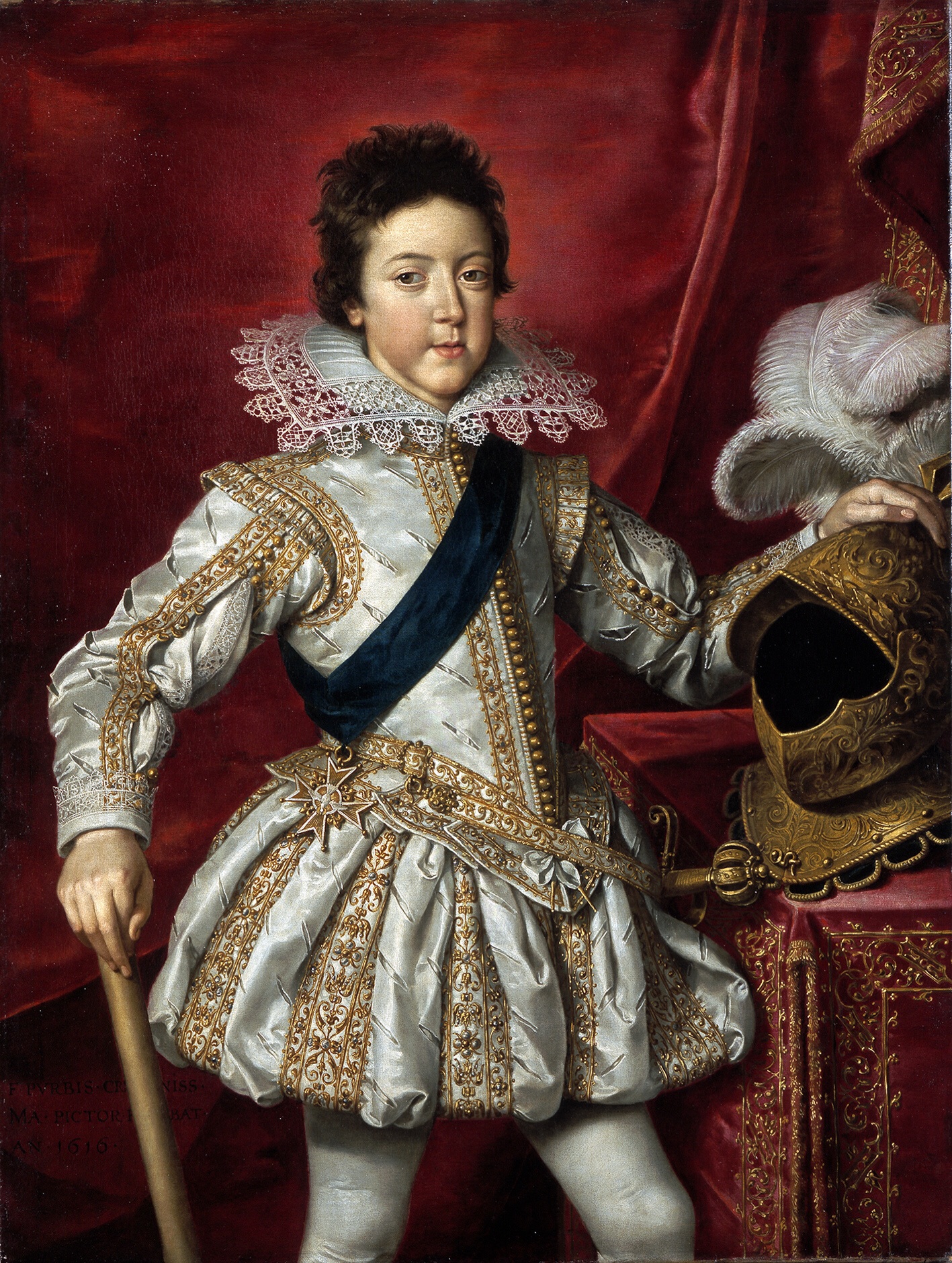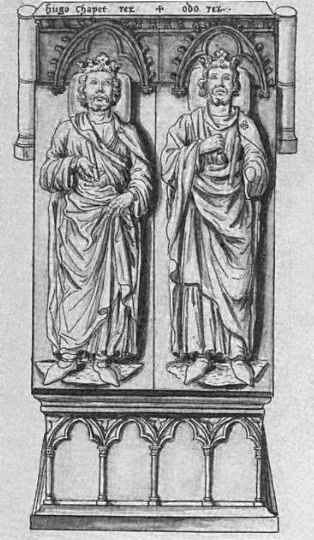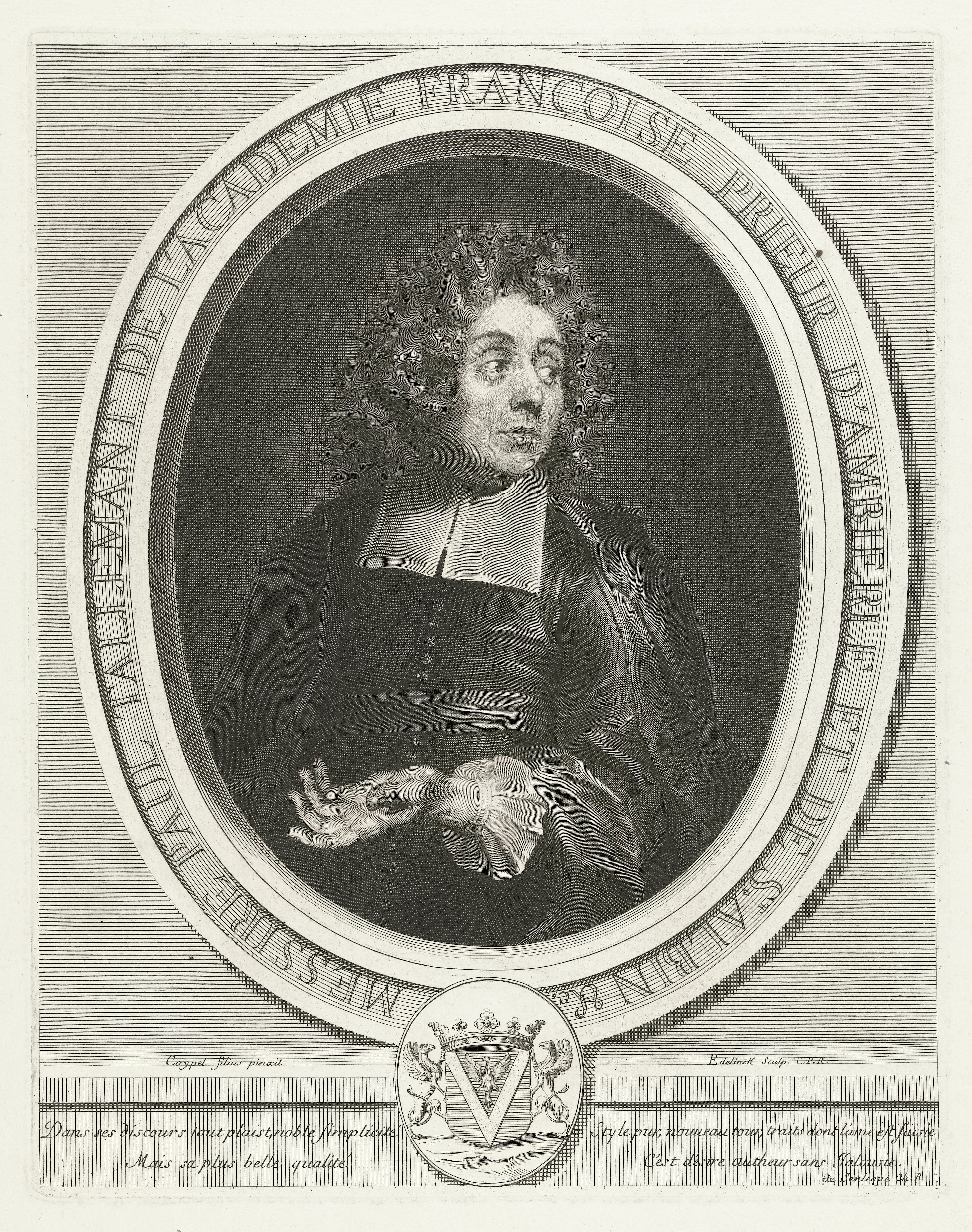|
1642 In France
Events of the year "1642 in France". Incumbents *Monarch: Louis XIII Events *11-12 June: : Henri Coiffier de Ruzé, Marquis of Cinq-Mars, personal favourite of the king, and Gaston, Duke of Orléans, the king's brother, plot against Cardinal Richelieu, the prime minister. Cinq-Mars attempts to get support for the rebellion from Philip IV of Spain but Richelieu's spy service catches him doing so and he is imprisoned and beheaded in the Place des Terreaux in Lyon for high treason along with another conspirator, François Auguste de Thou. *9 September: Reapers' War: Siege of Perpignan: Perpignan is conquered by Franco-Catalan forces led by Charles de La Porte after a 10-month siege. *Briare Canal opens throughout, the first summit level canal in Europe built using pound locks. Births *6 January: Julien Garnier, Jesuit missionary to Canada (d. 1730) *18 February: Marie Champmeslé, actress (d. 1698) *21 April: Simon de la Loubère, diplomat, writer, mathematician and poet (d. 1729) ... [...More Info...] [...Related Items...] OR: [Wikipedia] [Google] [Baidu] |
Louis XIII
Louis XIII (; sometimes called the Just; 27 September 1601 – 14 May 1643) was King of France from 1610 until his death in 1643 and King of Navarre (as Louis II) from 1610 to 1620, when the crown of Navarre was merged with the French crown. Shortly before his ninth birthday, Louis became king of France and Navarre after his father Henry IV was assassinated. His mother, Marie de' Medici, acted as regent during his minority. Mismanagement of the kingdom and ceaseless political intrigues by Marie and her Italian favourites led the young king to take power in 1617 by exiling his mother and executing her followers, including Concino Concini, the most influential Italian at the French court. Louis XIII, taciturn and suspicious, relied heavily on his chief ministers, first Charles d'Albert, duc de Luynes and then Cardinal Richelieu, to govern the Kingdom of France. The King and the Cardinal are remembered for establishing the ''Académie française'', and ending the revolt o ... [...More Info...] [...Related Items...] OR: [Wikipedia] [Google] [Baidu] |
Julien Garnier
Julien Garnier (born at Connerré, France, 6 January 1642; d. in Quebec, 1730) was a French Jesuit missionary to Canada. Life He entered the Society of Jesus in 1660, and, in October, 1662, sailed for Canada, he taught at the Jesuit college while he prepared for missionary work studying the Indian languages. He was ordained in 1668, the first Jesuit to be there.Quinn, Stanley. "Julien Garnier." The Catholic Encyclopedia Vol. 6. New York: Robert Appleton Company, 1909. 14 January 2018 He went first to the , but in a few months changed the field of his labours to the |
Canadian Martyrs
The Canadian Martyrs, also known as the North American Martyrs ( French: ''Saints martyrs canadiens'', Holy Canadian Martyrs), were eight Jesuit missionaries from Sainte-Marie among the Hurons. They were ritually tortured and killed on various dates in the mid-17th century in Canada, in what is now southern Ontario, and in upstate New York, during the warfare between the Iroquois (particularly the Mohawk people) and the Huron. They have subsequently been canonized and venerated as martyrs by the Catholic Church. The martyrs are St. René Goupil (1642), St. Isaac Jogues (1646), St. Jean de Lalande (1646), St. Antoine Daniel (1648), St. Jean de Brébeuf (1649), St. Noël Chabanel (1649), St. Charles Garnier (1649), and St. Gabriel Lalemant (1649). Background Jesuit missionaries worked among the Huron ( Wendat), an Iroquoian-speaking people who occupied territory in the Georgian Bay area of Central Ontario. (They were not part of the Iroquois Confederacy, initially made up ... [...More Info...] [...Related Items...] OR: [Wikipedia] [Google] [Baidu] |
René Goupil
René Goupil, S.J. (15 May 1608 – 29 September 1642), was a French Jesuit lay missionary (in French "donné", "given" or "one who offers himself") who became a lay brother of the Society of Jesus shortly before his death. He was the first of the eight North American Martyrs of the Roman Catholic Church to receive the crown of martyrdom and the first canonized Catholic martyr in North America. Life Goupil was baptized in St-Martin-du-Bois, near Angers, in the ancient Province of Anjou, on 15 May 1608, the son of Hippolite Goupil and Luce Provost. He was working as a surgeon in Orléans before entering the novitiate of the Society of Jesus (Jesuits) in Paris on 16 March 1639. He had to leave the novitiate due to deafness.René Goupil Dictionary of Canadian Biography Online. |
Marie De' Medici
Marie de' Medici (french: link=no, Marie de Médicis, it, link=no, Maria de' Medici; 26 April 1575 – 3 July 1642) was Queen of France and Navarre as the second wife of King Henry IV of France of the House of Bourbon, and Regent of the Kingdom of France officially between 1610 and 1617 during the minority of her son, Louis XIII of France. Her mandate as regent legally expired in 1614, when her son reached the age of majority, but she refused to resign and continued as regent until she was removed by a coup in 1617. A member of the powerful House of Medici in the branch of the Grand Dukes of Tuscany, the wealth of her family caused Marie to be chosen by Henry IV to become his second wife after his divorce from his previous wife, Margaret of Valois. The assassination of her husband in 1610, which occurred the day after her coronation, caused her to act as regent for her son, Louis XIII, until 1614, when he officially attained his legal majority, but as the head of the '' Consei ... [...More Info...] [...Related Items...] OR: [Wikipedia] [Google] [Baidu] |
Nicolas Ysambert
Nicolas Ysambert (1565 or 1569—May 14, 1642) was a French, Roman Catholic theologian, and lifelong teacher at the Sorbonne. Life Born at Orléans, Ysambert studied theology at the Sorbonne and was made a fellow (''socius'') of the college in 1598. Thenceforth he professed theology with such success as to attract public attention. In 1616 King Louis XIII founded at the Sorbonne a new chair of theology for the study of the controversial questions between Catholics and Protestants. The professor in charge had to give on every working day an hour's lecture followed by a half-hour of familiar conference with his auditors. Ysambert was appointed to this chair by the king, who in this instance had reserved to himself the nomination. This appointment, which was an honour in itself, was still more enhanced by the eulogies bestowed on Ysambert in the letters patent which designated him, wherein the king praises his competence and station, and his experiences in theology, controversial matt ... [...More Info...] [...Related Items...] OR: [Wikipedia] [Google] [Baidu] |
Michel Corneille The Younger
Michel Corneille the Younger (1642, Paris – 16 August 1708, Gobelins manufactory at Paris) was a French painter, etcher and engraver. Life Corneille was born in Paris, the son of an artist, Michel Corneille the Elder of Orléans, and on this account is sometimes called the "younger Michel". He is also and more commonly known as the "elder Corneille" (Corneille l'Aîné), to distinguish him from a younger brother, Jean-Baptiste Corneille, also a painter. His father was the first and the most indefatigable of his teachers; his other masters were Pierre Mignard and the celebrated Charles Le Brun. Devoting himself wholly to historical painting, Michel won the Academy Prize and went to Rome on the king's pension; but feeling his genius hampered by the restrictions of the prize, he gave up the money so that he might study the antique in his own way. Coming under the then powerful influence of the Eclectics, he studied with the Carracci and modelled his style on theirs. In 1663 h ... [...More Info...] [...Related Items...] OR: [Wikipedia] [Google] [Baidu] |
François Roger De Gaignières
François Roger de Gaignières (30 December 1642, Entrains-sur-Nohain – 1715, Paris), was a French genealogist, antiquary and collector. Life He was the grandson of a merchant at Lyon and the son of Aimé de Gaignières, secretary to the Count of Harcourt, a member of the Elbeuf branch of the House of Guise. In the late 1660s, he was named ''écuyer'' (equerry) to Louis Joseph, duke of Guise. Residing in a fine new apartment just over the stables of the magnificently renovated Hôtel de Guise, François Roger supervised the duke's riding and oversaw his stables, carriages, and footmen. His immediate neighbors in the stable wing were the respected neo-Latinist and translator Philippe Goibaut, who directed the Guise musical ensemble, and composer Marc-Antoine Charpentier, who wrote for the Guise chapel and salon. After the young duke's death in 1671, François Roger served as ''écuyer'' to Louis Joseph's aunt, Marie de Lorraine, who in 1679 appointed him governor of her princ ... [...More Info...] [...Related Items...] OR: [Wikipedia] [Google] [Baidu] |
Nicolas Roland
Nicolas Roland (8 December 1642 - 27 April 1678) was a French priest, canon and educator. He was a friend, contemporary and spiritual director of John Baptist de La Salle. Biography Childhood and early years Nicolas Roland was born in the small town of Baslieux-les-Reims in the ancient province of Champagne (historical province), Champagne, 9 kilometers away from Reims, son of Jean-Baptist Roland (1611–1673), Commissioner for wars and old cloth merchant. His godfather, 23 July 1643, was his uncle, Matthieu Beuvelet. In 1650 he joined the Jesuit College at Reims, by the church of St. Maurice, where he showed an active intelligence and the wish to become a priest. In 1653 he obtained the tonsure from the bishop Pouy at the abbey of Saint Pierre les Dames. Completing his preliminary studies, he traveled around France for while. A particularly difficult sea voyage persuaded Roland to return and complete his studies. The young student moved to Paris in 1660 to continue his studi ... [...More Info...] [...Related Items...] OR: [Wikipedia] [Google] [Baidu] |
Anne Hilarion De Tourville
Anne-Hilarion de Costentin, Comte de Tourville (24 November 1642, Paris – 23 May 1701) was a French naval commander who served under King Louis XIV. He was made Marshal of France in 1693. Tourville is widely considered as one of the most celebrated admirals in French naval history and is usually counted as one of the greatest naval technicians of his time . Military career At age 17, as a Knight of Malta, he fought his first naval battle on a frigate of the Order of Malta. At 25, he joined the French Royal Navy and began an active career, fighting the 1673 campaign of the Franco-Dutch War on the '' Sans-Pareil'', at the Battle of Agosta where he was in command of the ''Syrene'', and later in command of the ''Sceptre''. He served under Abraham Duquesne during the campaigns of 1676, and became a commander in 1690 during the War of the Grand Alliance. He flew his personal flag on the '' Soleil-Royal'', where it would stay until the battle of La Hougue in 1692. At the Battle of ... [...More Info...] [...Related Items...] OR: [Wikipedia] [Google] [Baidu] |
André Charles Boulle
André-Charles Boulle (11 November 164229 February 1732), ''le joailler du meuble'' (the "furniture jeweller"), became the most famous French cabinetmaker and the preeminent artist in the field of marquetry, also known as "inlay". Boulle was "the most remarkable of all French cabinetmakers". Jean-Baptiste Colbert (29 August 1619 – 6 September 1683) recommended him to Louis XIV of France, the "Sun King" (), as "the most skilled craftsman in his profession". Over the centuries since his death, his name and that of his family has become associated with the art he perfected, the inlay of tortoiseshell, brass and pewter into ebony. It has become known as '' Boulle Work'', and the École Boulle (founded in 1886), a college of fine arts and crafts and applied arts in Paris, continues today to bear testimony to his enduring art, the art of inlay. Life in 1677, on his marriage certificate, André-Charles Boulle gave his birth date, for posterity, as being 11 November 1642. No other d ... [...More Info...] [...Related Items...] OR: [Wikipedia] [Google] [Baidu] |
Paul Tallement The Younger
Paul Tallement (18 June 1642, in Paris – 30 July 1712, in Paris), known as Paul Tallemant le Jeune (''the Younger''), was a French churchman and scholar. Biography Inspired by the then-fashionable style of sentimental cartography (as exemplified by the ''Carte de Tendre'' or ''Gulliver's Travels''), in 1663 he published an imaginary allegorical travel-memoir ''Voyage de l'isle d'amour'' (''Voyage to the isle of love''), where the places are ruled by figures such as Respect, Concern, Pride, Warmth, Modesty and (in the second part) Coquetry and Gallantry. He also wrote divertissements, panegyrics and funeral elogies. He was elected a member of the Académie française in 1666 and of the Académie des inscriptions et belles-lettres in 1673. Claude Gros de Boze said Tallement was "more to be recommended for his virtues than for his talents".Cited by , ''Histoire des quarante fauteuils de l'Académie française depuis la fondation jusqu'à nos jours, 1635-1855'', volume I, 1844, p. 2 ... [...More Info...] [...Related Items...] OR: [Wikipedia] [Google] [Baidu] |





